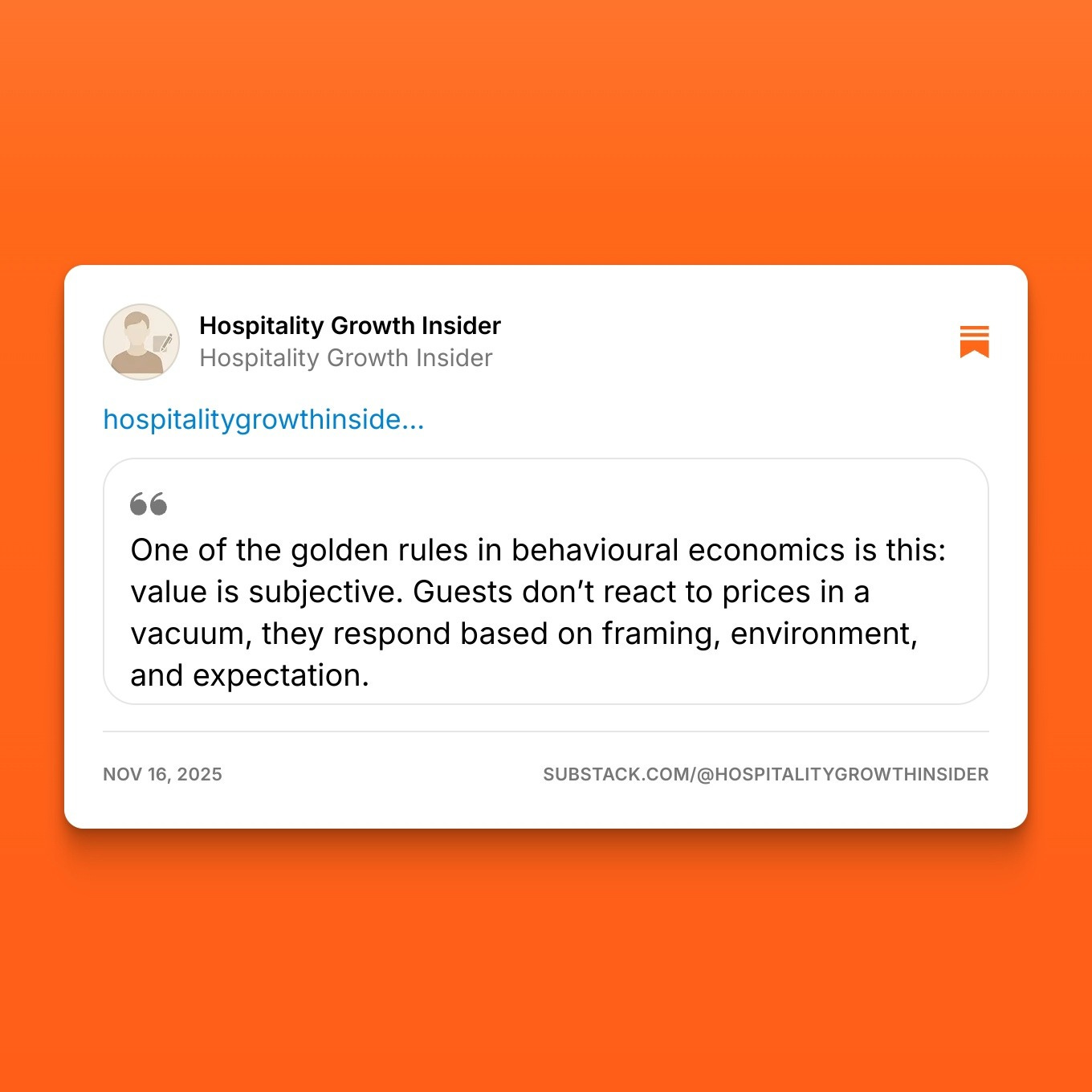📌 January Strategic Update
Insights Every Hotel & Restaurant Should Act On
How can we combat the Q1 slump without discounting? How can we create mid-week demand? And how can we adjust our marketing strategies to succeed in 2026?
🌞 Hello and Welcome To Hospitality Marketing Insight
I’m your host, Dawn Gribble, and this week we’re exploring the dangers of discounting in January, what wellness guests actually want, plus value-added campaign ideas.
January is typically a low-demand month where consumers are fiscally cautious and rebalancing after the holidays. Spending growth at restaurant chains fell by 1.7% in January 2025, and independent restaurants saw a 2.6% decline. Hotels are experiencing similar pressure, with studies showing that properties that discounted against their competitive set recorded lower RevPAR even when occupancy increased.
It’s a month that pushes people to reset their habits, leading them to seek places that feel good for both their well-being and their wallets. 84% of consumers expect to reduce their spending over the next six months, and 52% plan to cut dining out. Demand is low, costs stay high, and guests lean heavily into wellness, moderation and value-driven choices.
While discounts might seem like a natural response to a slow season, using them aggressively or universally carries significant risks.
What you do in January sets expectations for the rest of the year
📄 On the Menu this week
Why January Discounting Damages Revenue Integrity and Long-Term RevPAR
Cognitive ROI in Hospitality: How Reduced Mental Load Drives Guest Satisfaction and Spend
Wellness Intent vs Behaviour: What January Guests Plan, What They Do, and How Hospitality Should Respond
How to Increase Midweek Hotel and Restaurant Demand Without Discounting
Latest Platform Updates
Marketing Dates for your Diary
Quick Wins for Q1
Let’s Check In ☕
👉 The full breakdown is best read online continue reading here
⚠️ Why January Discounting Damages Revenue Integrity and Long-Term RevPAR
January creates a predictable temptation to cut prices. 57% of shoppers expect the economy to weaken in the next six months, the most negative outlook since 1997, and holiday travel budgets have dropped 18% year-over-year. This creates a landscape where guests enter the month financially cautious, scanning for lower prices and engaging in deal-seeking behaviour. 70% of shoppers are already engaged in value-seeking, and 95% of younger generations are actively seeking deals, heightening the risk that a discounted January rate becomes their benchmark.
But when discounts become the primary message in January, guests begin to doubt the integrity of standard pricing. For example, when a guest sees a room at £98 in January, that number becomes the reference point they carry forward. Returning to the normal £145 rate later in the year suddenly feels expensive, even if £145 has always been the standard.
This psychological anchoring effect means a short-term dip in rate can fix a low price in the guest’s mind for months. A deep reduction implicitly asks: “Was this overpriced before?” The wider financial context deepens this effect. 43% of consumers plan to decrease discretionary spending over the next three months, and 51% have already reduced discretionary spending, which means guests are primed to interpret lower prices as the “true” value. Younger generations planning to spend 34% less than last year are particularly likely to hold on to the lowest price they encounter and anchor against it for the rest of the year.
Discounts also influence the type of customer you attract. Heavy or frequent reductions tend to pull in price-loyal guests who choose the lowest available rate, not the brand. These customers are less likely to return at full price and often spend less on high-margin services such as spa treatments, bars or signature dishes. Over time, this can depress both Average Daily Rate and Average Check Value even when volumes appear healthy.
Successful operators use targeted tactics that preserve the price anchor while still giving guests a compelling reason to book. This includes value-added packages where the room rate remains intact, but high-perceived-value extras are included. It also includes segmented offers for loyalty members, locals or corporate clients, which fill low-impact inventory without broadcasting a lower public rate.
Experiential approaches work particularly well at this time of year. Themed breaks, resolution-led packages and other purpose-driven experiences allow operators to introduce new product lines at premium price points. Hotels that offer unique dining experiences see an average 10% increase in F&B revenue, and 87% of guests say dining experiences directly influence their satisfaction. Case studies show experiential dining concepts can lift revenue by 28.7% in just a few months, removing direct price comparison and giving guests something aspirational to engage with.
Because these risks compound, your focus in January should shift from price cuts to value creation.
You Need a Value Added Strategy
January requires offers that protect the price anchor while still giving guests a compelling reason to book. The most effective tactics increase perceived value without lowering the base rate, ensuring guests remain confident in the normal pricing structure. Behaviour-led packages, anchored bundles and segmented incentives outperform discounting because they create gain without signalling cheaper pricing. Hotels that offer unique dining experiences see an average 10% increase in F&B revenue, and 87% of guests say dining experiences directly influence satisfaction, reinforcing the commercial strength of experience-first value creation.
Keep reading with a 7-day free trial
Subscribe to Hospitality Marketing Insight to keep reading this post and get 7 days of free access to the full post archives.




